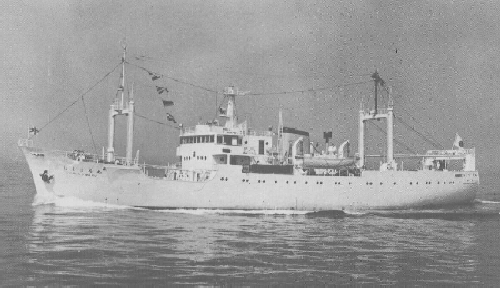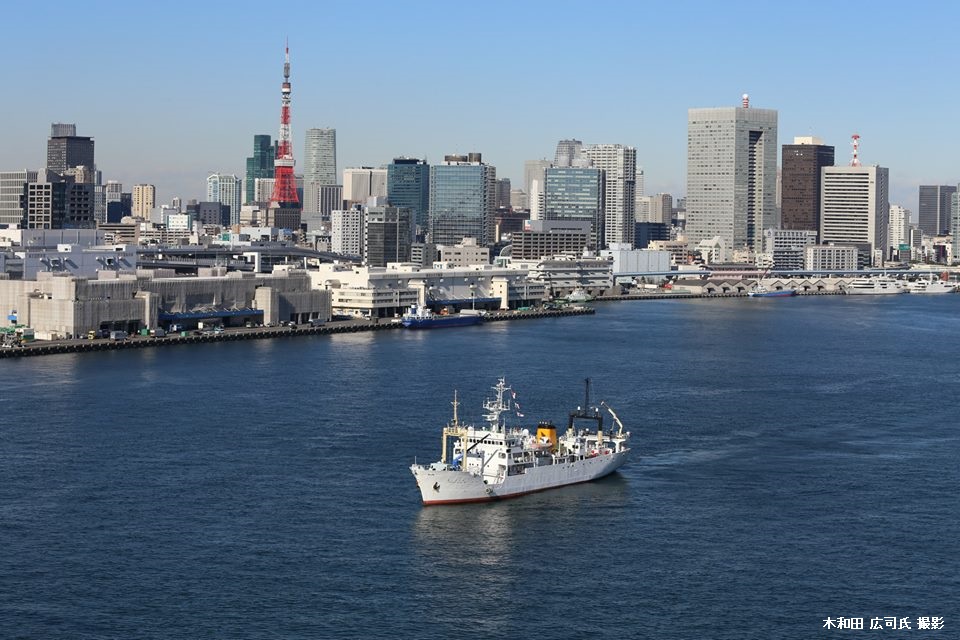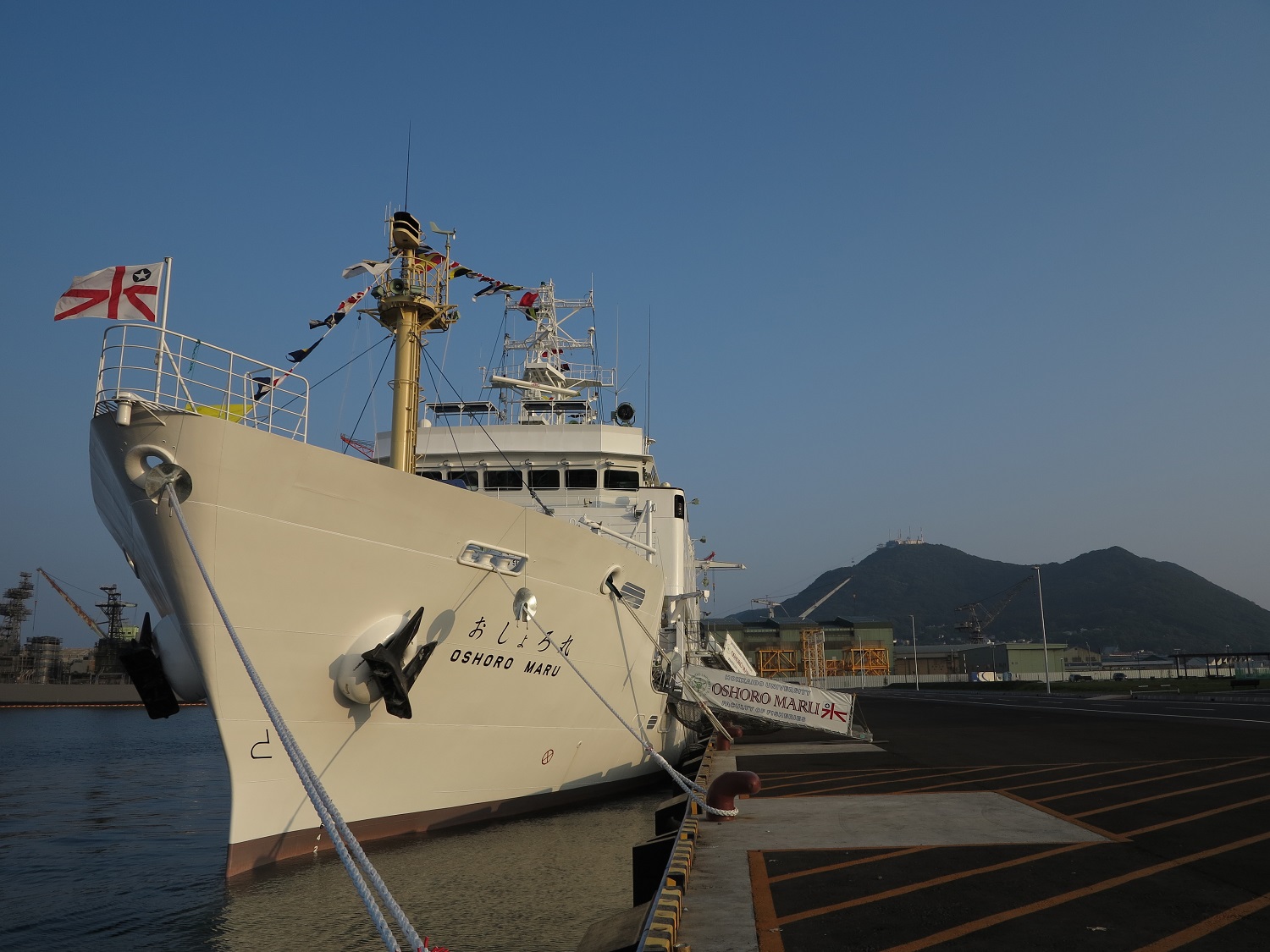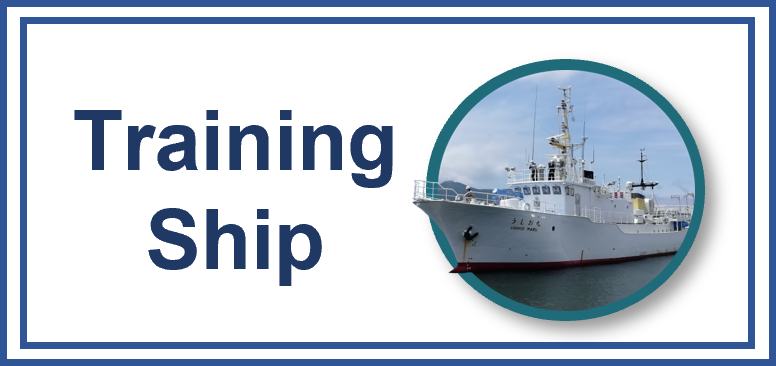Training Ship Oshoro-Maru
トピックアウトライン
-
Here is a description of the Training ship“Oshoro Maru” School of Fisheries Sciences Hokkaido University.
-

In 1907, the Department of Fisheries was established at Sapporo Agricultural College, and two years later, in 1909, the first training ship, the Oshiro-Maru (忍路丸 in Japanese), was built.
Topsail schooner modeled after an American cod fishing boat. 31 meters in length, 162 tons in gross tonnage.
Later, the ship was transferred to the Boy Scouts of Japan and became a training ship of the Marine Club as "Giyu Wani-Maru (義勇和爾丸 in Japanese)", contributing to the development of Japan's Sea Scouts.
-
From the Nisei, the name was changed to "Oshoro-Maru(おしょろ丸)" written in hiragana.
Barkentine-type sailing ship (with 500 hp diesel engine), 42 meters in length, 471 tons gross tonnage (converted to a steamer in 1942 by removing the sail gear).
Although the ship was temporarily requisitioned for military use, she survived the air raid on Hokkaido in July 1945, which resulted in the loss of many lives, including those of liaison ships and vessels in the Tsugaru Straits, thanks to the "miraculous navigation "* of then Captain Ichiro Saito, who managed to minimize the machine gun fire by US aircraft and escape harm. Over the next 35 years, the ship carried 1,648 trainees and sailed a total distance of more than 300,000 nautical miles.
(*) Hokkaido Shimbun, "70 Years After the War: Unforgettable Disasters of War," Hokkaido Shimbun, 2015.12. -

Stern trawler type (2,000 hp engine, variable pitch propeller) 67 meters in length Gross tonnage 1,180 tons
She participated in the International Indian Ocean Ocean Expedition (IIOE) and Cooperative Study of the Kuroshio and Adlacent Regions (CKS), and in 1968, began voyages to the Northern Ocean; in 1972, she reached 72°N in the Chukchi Sea, setting a record as the northernmost Japanese ship at the time. In addition to training and research, from 1965 the ship also participated in the visit to the graves of the Northern Territories.
In all, the ship covered a total distance of 518,000 nautical miles on its 96th voyage, with 3,150 students on board. -


Stern trawl type like the Oshoro-maru(おしょろ丸) III 72 meters long, gross tonnage 1,383 tons (later 1,396 tons)
As the educational goal shifted from "fisheries studies," the study of fisheries for efficient harvesting and production, to systematic "fisheries science" aimed at "sustainable production and efficient utilization of marine and aquatic resources" and "conservation of marine ecosystem and environment," the content of training voyages gradually increased with an emphasis on oceanographic research. In 2008, the program received the PICES Ocean Monitoring Award (POMA) from the North Pacific Marine Science Organization (PICES).
In parallel with the research voyages, we also started "Freshman Voyages," which are open to the entire university and are credited as general education exercises, and "Education-Related Joint Usage Center" voyages for students from other universities to come on board. From 2011 to 2014, we were also able to provide voyages to Iwate Prefectural Miyako Fisheries High School, which was damaged in the Great East Japan Earthquake, as part of our "response to the disaster" efforts. -
(1) Fostering human resources who will be active in the global fisheries and marine fields
(2) Conservation of marine ecosystems, securing of food resources, and sustainable resource management
In 2012, we began construction of a replacement training ship with the aim of providing a platform for future-oriented education described above.
Based on this, the basic concept was "quiet and vibration-free campus at sea." To achieve this, based on the results of water tank experiments, a "bilge keel" was enlarged from the design stage, "anti-rolling tanks" were efficiently arranged, and "spread-type fin stabilizers," which are usually not seen in this class, were installed. A "fin stabilizer," which is usually not seen in this class, was installed and mounted.
March 21, 2013 (Heisei 25) Groundbreaking
March 14, 2014: Launched
July 28, 2014: Inauguration
Overall length 78.27 meters, gross tonnage 1,598 tons, capacity 99 (60 students)
In addition to the hull structure described above, the vessel is equipped with an electric propulsion system (two units, one shaft) with high motion and seaworthiness equivalent to ICC (Ice Class C) to enable training and research in the polar regions, and to reduce vibration, noise, and environmental impact.

